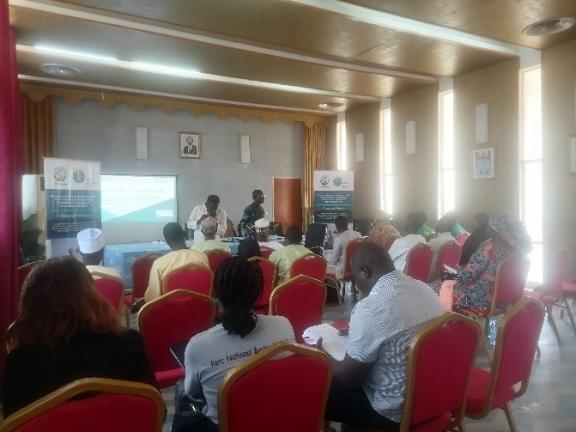Leveraging local connections to increase awareness of grievance redress: A success story from Cameroon
To strengthen its grassroots presence and promote its mission and values with local communities, the Independent Redress Mechanism (IRM) launched an advocacy grant for Civil Society Organisations (CSOs) in 2023.
Young Volunteers for Environment (YVE), a Cameroonian CSO, was among the three selected CSOs from nearly thirty applications. YVE utilised the $3,000 grant to execute activities to enhance the visibility of the IRM within local communities. Leveraging its grassroots networks, YVE focused on climate finance issues and successfully promoted awareness and engagement of the IRM through four targeted activities from September to November 2023.
The first activity consisted of two community dialogues in GCF-funded project regions. The initial dialogue was attended by 19 key stakeholders, including leaders of community organisations (12), traditional chiefs (3), and journalists (4). The next dialogue meeting, during a field visit, drew in sixty (60) participants from project communities. During these community dialogues, stakeholders were provided with key information about how to access IRM resources in the event of harm caused by GCF-funded projects.
The second activity focused on a media campaign. YVE engaged with media by engaging in local radio talk shows, local television broadcasts, and publishing information about the IRM in local print and online press. This approach effectively reached a wider audience, particularly those with low literacy levels in remote areas.
YVE discussing the IRM with Galaxy TV
Thirdly, YVE implemented a digital campaign. Information about the IRM was distributed through various social media platforms such as Twitter (X), WhatsApp, LinkedIn, and Facebook. YVE effectively utilised its online presence to connect with a broad audience, including youth and individuals in remote areas who depend on the Internet to access information. On all platforms, posts about the IRM received between 1500-4500 views during the three months of the campaign.
Finally, YVE organised a regional online seminar aimed at raising awareness among CSOs and other stakeholders about the IRM’s mandate to address complaints from individuals who feel they have been negatively affected by GCF projects or programmes that fail to comply with GCF operational policies and procedures. The interactive webinar, which had over 150 participants, attracted attendees from Angola, Burkina Faso, Cameroon, Central African Republic, Democratic Republic of Congo, Mali, Morocco and Togo.
Overall, the four communication and outreach activities by YVE had a wide-reaching impact.
By the end of the campaign, over 13,000 stakeholders were impacted. Several lessons were drawn from the engagement with YVE in IRM's communication and outreach strategy:
- Utilising multiple communication channels to communicate information about IRM is advantageous. For instance, in-person community dialogues and local media such as radio and television are better suited to local contexts, as access to internet-enabled services are not accessible by everyone. In future outreach and communication activities, the IRM will focus on the use of multiple communication channels to fit the local context of target audiences.
- Given the high levels of illiteracy in many GCF project communities, it is essential to provide tailored translations to effectively raise awareness about the IRM in local contexts. In future outreach and communication activities, IRM will endeavor to support the translation of communication materials for the target audience.
- The low attendance of women in community dialogues can be attributed to cultural barriers segregating women from men during gatherings. Organising events specifically targeted at women in the future would be beneficial.
- The use of digital media allows for widespread coverage, particularly reaching most youth. This is also advantageous as young people can help convey the message to older generations. IRM will leverage the growing use of digital technologies to keep stakeholders engaged.
In the coming years, the IRM will continue to actively engage with CSOs to raise awareness about its work with local communities.


